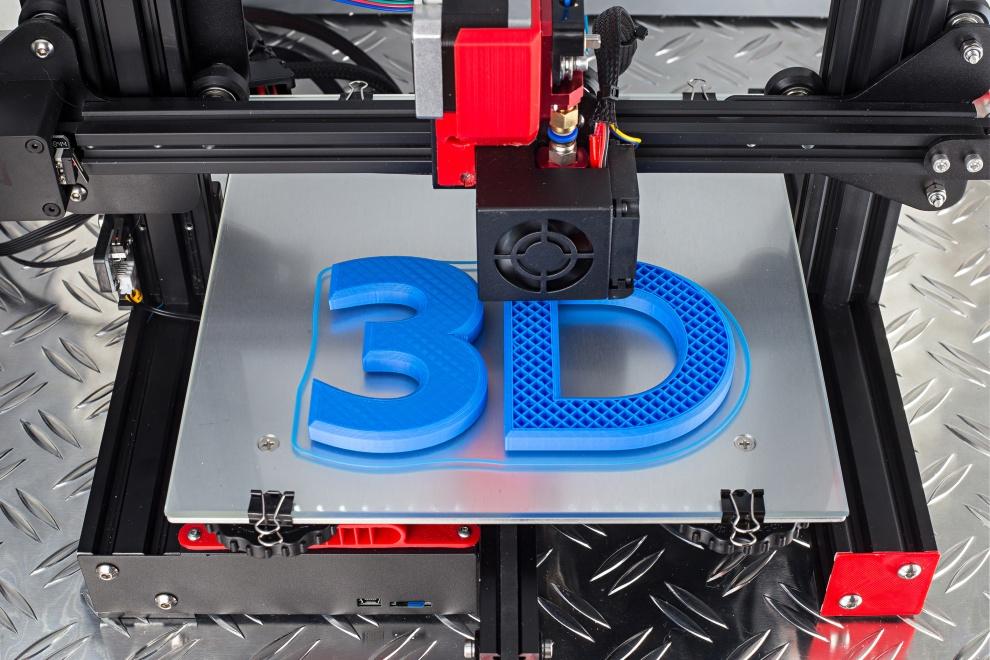- FMA
- The Fabricator
- FABTECH
- Canadian Metalworking
Our Publications
Categories
- Additive Manufacturing
- Aluminum Welding
- Arc Welding
- Assembly and Joining
- Automation and Robotics
- Bending and Forming
- Consumables
- Cutting and Weld Prep
- Electric Vehicles
- En Español
- Finishing
- Hydroforming
- Laser Cutting
- Laser Welding
- Machining
- Manufacturing Software
- Materials Handling
- Metals/Materials
- Oxyfuel Cutting
- Plasma Cutting
- Power Tools
- Punching and Other Holemaking
- Roll Forming
- Safety
- Sawing
- Shearing
- Shop Management
- Testing and Measuring
- Tube and Pipe Fabrication
- Tube and Pipe Production
- Waterjet Cutting
Industry Directory
Webcasts
Podcasts
FAB 40
Advertise
Subscribe
Account Login
Search
3D printing offers ‘Blue Ocean’ opportunities
The breadth of 3D printing technologies enhances entrepreneurial success
- By Kip Hanson
- January 23, 2021
I don’t get out much. That’s true for many of us these days, but particularly for someone like me who writes all day. It helps explain why I’ve never heard the term “Blue Ocean, Red Ocean.”
I first heard it from the owner of a 3D printing firm I recently spoke with, in response to the question, “What got you into additive manufacturing?” Once my slow brain processed what he’d said, I asked him to repeat it, upon which he started talking about Cirque du Soleil.
It seems the Las Vegas circus show that I’d like to see one day but can’t bring myself to spend $250 on is a classic example of creating a new market space, or Blue Ocean. Conversely, Red Ocean is a market space filled with powerful, established sharks that eat up the competition and turn the waters red. There’s even a bestselling book on the topic called Blue Ocean Strategy.
After my conversation with the owner, I realized that Blue Ocean is a perfect metaphor for the 3D printing industry. Even today, more than three decades after its inception, AM continues to present us with countless Blue Ocean opportunities.
The first of these was additive itself, a novel concept that quickly spawned the likes of 3D Systems, Stratasys, EOS, and many others, companies that have now become the sharks gobbling up smaller competitors.
Such opportunities continue, thanks in large part to the fact that 3D printing A) offers design freedom that traditional manufacturing lacks, B) attracts entrepreneurs of all ages and skill levels, and C) is growing by leaps and bounds, gaining speed, precision, and capabilities with each passing day.
Consider the shop owner. He opened the doors of his small company just 10 years ago and now owns several million dollars in 3D printing equipment and supplies a range of prototype and end-use parts to the aerospace, defense, and ground transportation industries. He’s on his way to becoming a shark.
Granted, success stories like these are not unusual in manufacturing, additive or otherwise. What seems different to me, though, is the product diversity and flexibility made possible through the sheer breadth of 3D printing technologies and materials. From FFF and SLA to DMLS, SLS, DLP, EBM, and others (sorry for the acronym dump), not to mention the immense CAD/CAM support for additive overall, and it’s easy to see that 3D printing will continue to expand like no other manufacturing technology has thus far.
Ready to take a swim? Jump in. The water’s a beautiful shade of blue.
About the Author

Kip Hanson
About the Publication
- Podcasting
- Podcast:
- The Fabricator Podcast
- Published:
- 04/16/2024
- Running Time:
- 63:29
In this episode of The Fabricator Podcast, Caleb Chamberlain, co-founder and CEO of OSH Cut, discusses his company’s...
- Trending Articles
- Industry Events
16th Annual Safety Conference
- April 30 - May 1, 2024
- Elgin,
Pipe and Tube Conference
- May 21 - 22, 2024
- Omaha, NE
World-Class Roll Forming Workshop
- June 5 - 6, 2024
- Louisville, KY
Advanced Laser Application Workshop
- June 25 - 27, 2024
- Novi, MI



























